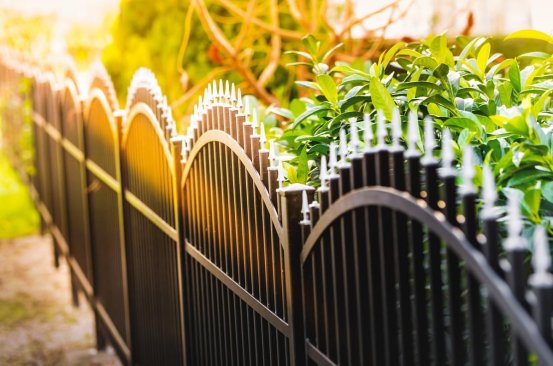Selecting the ideal garden fence can completely redefine your outdoor area, turning it into a serene and private retreat. With so many materials and styles to choose from, finding one that meets your functional and aesthetic goals is essential. This comprehensive guide explores the key factors to consider, cost aspects, and maintenance tips to help you select a fence that enhances your garden’s beauty and longevity.

Exploring Common Garden Fence Styles
Before deciding, it’s important to understand the most common types of garden fences available today. Wooden fences are a timeless favorite, known for their natural warmth and traditional charm. Metal fences, including wrought iron and aluminum, offer strength and a sophisticated touch, while vinyl fencing provides a durable, low-maintenance alternative. Each material offers unique benefits, so your choice should reflect both your garden’s design and your lifestyle needs.
When comparing garden fence materials, think about how they will perform in your environment. Wooden fences may require more care in damp or coastal areas, whereas metal fences can better endure harsh climates. You should also consider the overall design you want to achieve — a wood fence can bring a cozy, rustic feel, while a metal one provides a sleek, modern aesthetic. Balancing practical performance with visual appeal will guide you toward the best option for your garden.
Prioritizing Privacy in Fence Selection
Privacy often plays a major role in the decision-making process for homeowners. If creating a peaceful, enclosed garden space is your goal, opt for tall, solid fencing. Options such as close-board or panel fences effectively block outside views. Alternatively, lattice or trellis designs can add height and support climbing plants while maintaining a softer, more decorative look.
When considering fences for privacy, think about the appropriate height and structure that meet your specific needs. Taller fences generally provide better seclusion, but always review local height regulations. Wood and vinyl are great choices for complete coverage, while combining materials can offer both privacy and style. Ultimately, the right fence should provide comfort, security, and tranquility within your outdoor area.
Budgeting for Garden Fence Installation
Your budget will naturally influence your fencing choice. Prices vary depending on material type, height, length, and installation method. Wooden fences usually have lower upfront costs but require ongoing maintenance. Metal and vinyl options are more expensive initially yet tend to be longer-lasting and require minimal upkeep.
To determine how much your garden fence installation may cost, gather quotes from several suppliers or contractors. Remember to include potential long-term expenses such as repair or maintenance costs. Professional installation may also be worth the investment if you want a flawless finish. A balanced budget that considers both upfront and future costs will help you choose a fence that offers the best return on your investment.
Key Factors When Deciding on a Garden Fence
Beyond looks and price, several practical factors should guide your decision. Start by identifying your main purpose — whether it’s privacy, security, or aesthetic enhancement. The climate where you live also matters, as certain materials are better suited for specific weather conditions. Maintenance preferences should also be considered; some fences need frequent care, while others are nearly maintenance-free.
Environmental impact is another aspect worth evaluating. Sustainable options, such as responsibly sourced or FSC-certified wood, make for greener choices. Additionally, think about how your fence complements your existing landscaping or future garden upgrades. The right fence doesn’t just serve a function — it adds value and visual harmony to your property.
Maintaining Your Garden Fence for Long-Term Use
After installation, regular maintenance ensures that your garden fence remains strong and attractive for years. Routine cleaning and inspections help detect small issues early before they escalate. Wooden fences benefit from occasional staining or sealing to protect against moisture and sun exposure, while metal fences should be treated to prevent rust.
Develop a maintenance schedule to check for loose boards, damaged posts, or signs of wear. For vinyl fences, simple cleaning with mild soap and water will keep them looking fresh. By dedicating time to proper upkeep, you’ll extend your fence’s lifespan, protect your investment, and maintain an inviting, well-kept garden environment all year round.
